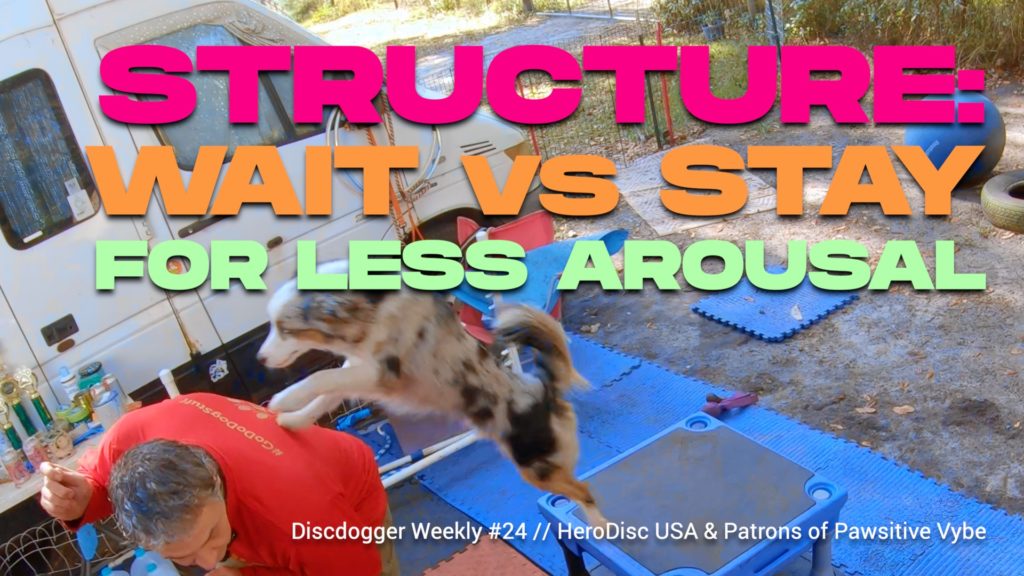
Wait vs Stay Using a BackStall with An Over-Aroused Dog | Pt 1
This is the first of a 4 part session with Motown, an 18 month old MiniAussie. Motown is easily over-aroused while working for cookies. He is Apryl’s dog and she handles him fine. He is still over-aroused, but manageable for her if she stays on top of him. I am not a fan of “staying on top” of a dog. I try to cultivate a sense of self-discipline with a working dog, which is often easier said than done and certainly easier done with a dog who is not yours.
Working 4 Things At Once Without Lumping
A common training maxim is: Be a Splitter, Not a Lumper. I agree.
That said, in these sessions I’m focused on at least 4 key criteria and am working them without lumping. A good plan and some elegant training theory can be leveraged towards multiple target criteria without lumping. In fact, working with an over-aroused dog requires multiple criteria, a good plan, and elegant training theory.
Pawsitive Vybe is all about elegant training. And by elegant I mean accomplishing multiple goals in a single exercise as well as being simple, beautiful, and efficient. I hope you’ll agree that this session fits that definition of elegant.
Wait vs Stay
I hit on this in this week’s DiscDogger Weekly show in detail and also cover it in this piece from some time ago.
The executive summary is that Wait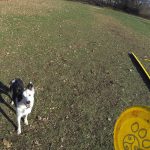 Waiting on cue and situationally is extremely important for disc dog freestyle training. The competition field might not see too much waiting going on as everything is supposed to be happening in flow,... More and Stay (duration behaviors) are completely different behaviors. A Stay means that the dog holds position until the release cue is given – Stays only release to the Release
Waiting on cue and situationally is extremely important for disc dog freestyle training. The competition field might not see too much waiting going on as everything is supposed to be happening in flow,... More and Stay (duration behaviors) are completely different behaviors. A Stay means that the dog holds position until the release cue is given – Stays only release to the Release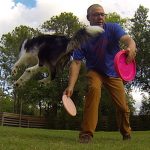 Release has many meanings in disc. Throws and throw variations can be referred to as releases. Sometimes you talk about the dog releasing something, the toy, or the environment, as in to stop... More Cue (Off, OK, Free, etc). A Wait means that the dog holds position and releases to a conditioned response. This is a critical distinction in dog training and especially dog sports. Lack of clarity on this point is directly responsible for many many dog sport performance issues.
Release has many meanings in disc. Throws and throw variations can be referred to as releases. Sometimes you talk about the dog releasing something, the toy, or the environment, as in to stop... More Cue (Off, OK, Free, etc). A Wait means that the dog holds position and releases to a conditioned response. This is a critical distinction in dog training and especially dog sports. Lack of clarity on this point is directly responsible for many many dog sport performance issues.
In this session I am using both the Wait and the Stay behaviors towards multiple purposes:
- to provide structure for the dog
- to compare and contrast the skills to better Motown’s understanding
- to reduce arousal
- to set up and prepare for the Back Stall
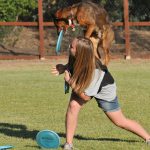 A Stall happens when your dog leaps up and stays on a part of your body. Stalls are usually named by the part of your body they happen on. If your dog leaps... More, the actual disc dog behavior I’m working in these sessions.
A Stall happens when your dog leaps up and stays on a part of your body. Stalls are usually named by the part of your body they happen on. If your dog leaps... More, the actual disc dog behavior I’m working in these sessions.
2 Behaviors, Wait and Stay are being used for at least 4 purposes with no lumping. Both of these behaviors are serving as reinforcement for reduced arousal (DriveDrive is focus and energy applied towards work. There are many kinds of Drive: social drive, tracking drive, prey drive, bite/kill, stalking, and food to name a few. Social drive, prey drive, and... More Building) while both behaviors are being reinforced and clarified by this training session.
Stall is a Stay
The “Stall” cue and the Back Stall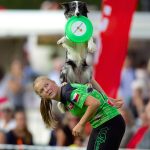 A Stall has the dog leaping up and chilling out on the handler’s back. Stalls are great for showmanship and for presenting a dog to the crowd. They create a dramatic or emotive... More behavior are both duration behaviors, which we’ll call “Stays” for simplicity’s sake. This means that the Back Stall should be held until I give the Release Cue,”Off.”
A Stall has the dog leaping up and chilling out on the handler’s back. Stalls are great for showmanship and for presenting a dog to the crowd. They create a dramatic or emotive... More behavior are both duration behaviors, which we’ll call “Stays” for simplicity’s sake. This means that the Back Stall should be held until I give the Release Cue,”Off.”
Now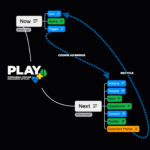 The Now Phase is an integral part of the Play Cycle in the Play+ training philosophy. It embodies the current, immediate interaction between the handler and the dog, anchoring them in the present... More the Back Stall is a somewhat complex behavior – it’s hard to pay the dog, the dog has to work to stay up there, and hard to control as the handler. It’s not too hard, but it’s harder than the Pedestal.
The Now Phase is an integral part of the Play Cycle in the Play+ training philosophy. It embodies the current, immediate interaction between the handler and the dog, anchoring them in the present... More the Back Stall is a somewhat complex behavior – it’s hard to pay the dog, the dog has to work to stay up there, and hard to control as the handler. It’s not too hard, but it’s harder than the Pedestal.
I’ll use the “Stall” cue on the Pedestal as a lower criteria behavior that Motown can easily hit and I can easily control and reinforce. I’ll ask Motown to Stall on the pedestal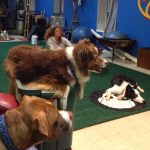 Spot is a “go to a place”, or “go to a mat” behavior. This means that the dog seeks out and performs a duration behavior on a spot of the handler’s choosing. A... More and pay him until I ask him,”Off,” and then will pay him on the ground (hah, no really… make sure you make it to sessions 3 and 4…)
Spot is a “go to a place”, or “go to a mat” behavior. This means that the dog seeks out and performs a duration behavior on a spot of the handler’s choosing. A... More and pay him until I ask him,”Off,” and then will pay him on the ground (hah, no really… make sure you make it to sessions 3 and 4…)
So in this framework I will be teaching and generalizing the Stall behavior in two places at once.
Wait on the Pedestal and the Ground
The Wait cue will be used to set up the Stall and will be given on both the ground before Stalling on the Pedestal and on the Pedestal before launching onto the Back Stall.
This Wait will be intermixed in random or variable ratio fashion with the Stay. By intermixing them and placing them next to each other Motown will learn to discriminate the two as each behavior is being rewarded with both cookies and functional rewards (action and Next"Next" encapsulates the dog's anticipation of a forthcoming reward, sparking motivation and excitement. This expectancy creates a driving force that propels the dog through training, forming a continuous loop of engagement. When "Next"... More behavior).
Pedestal as Middle Ground and Staging Area
The Pedestal is a key apparatus in this training session. It will be used as a localization tool to keep the aroused dog in place and on his toes and as a staging area where we can gather ourselves physically and gather our wits between reps.
Dumping the dog off the Stall to the Pedestal and using the Off cue to get him back to the ground is a good check on overzealous performance. Grounding the dog’s arousal with the pedestal is effective drive management that also reinforces the Stall behavior and sets up a structure that serves performance and understanding.
Dealing with a Cookie Monster
Dealing with a cookie monster like Motown with 4 on the Floor is nothing new. It is a standard positive training approach to the problem. The problem with 4 on the Floor, on it’s own, is that the undesired behavior is rehearsed and that rehearsal maintains the aroused state while entertaining frustration.
The structure of this session: Pedestal, Stall, Wait, Off as keystones are key to centering the dog’s focus on the behaviors and thoughtfully following the handler. Without the focus on the behaviors and the thoughtful following of the behavior and the success of doing so, the 4 on the Floor will be less effective.
Successful performance of the Stall and Wait and of actually following the handler also reinforce calm, cool, and collected cookie taking.
Check out the next 3 installments of this training session for more info and the progression.






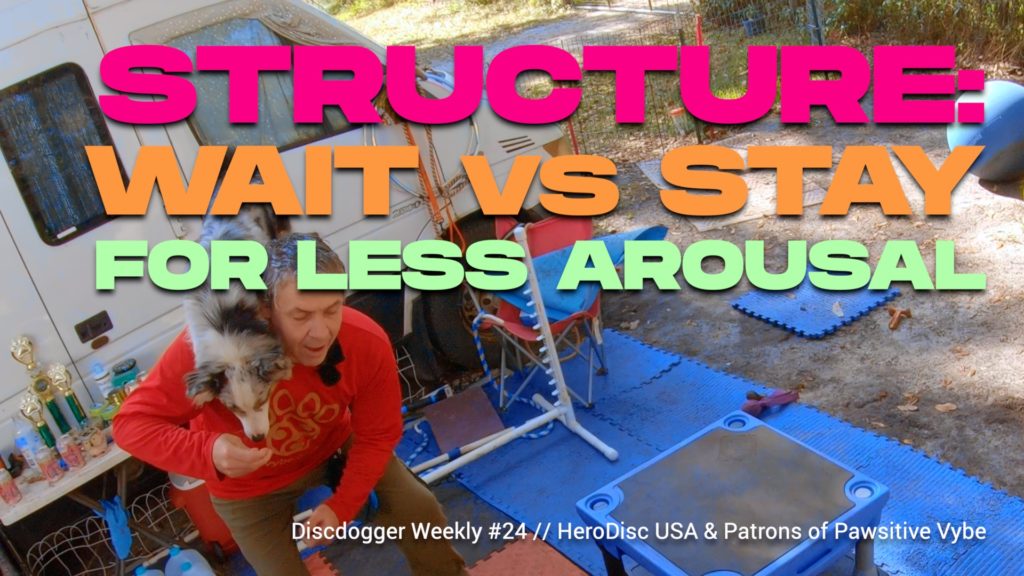

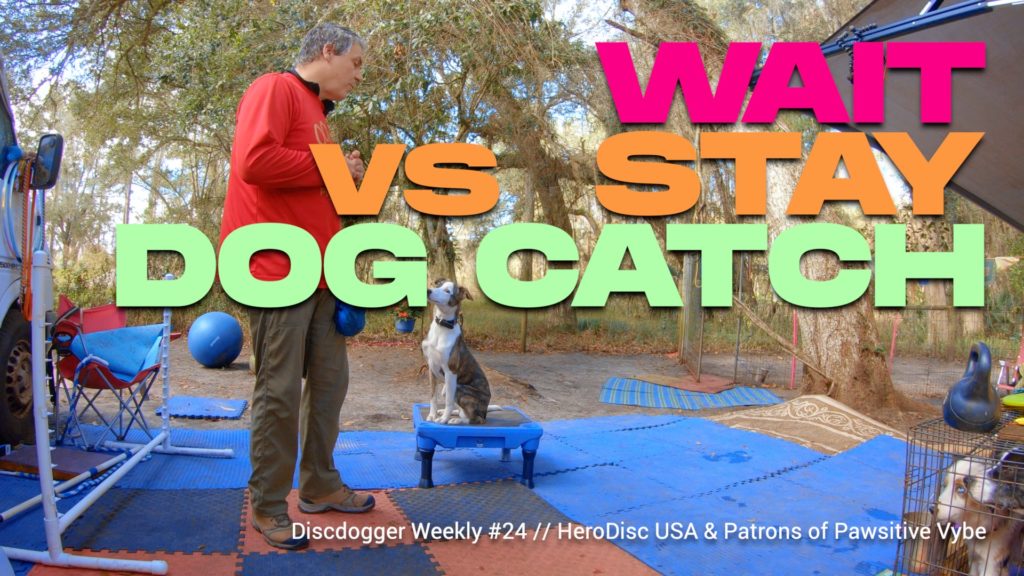
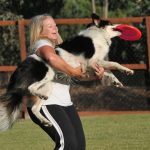
Hey Ron could you link the other articles of this session to me if possible I feel this will help me out with everything Im doing right now. thanks @k9disc
I don’t know where this message is… hit me up via text if you want…
Got it now… heh
lol thanks man yea I was looking around for white belt yellow belt stuff and found this gem of information. must dive deeper into archives. thanks man